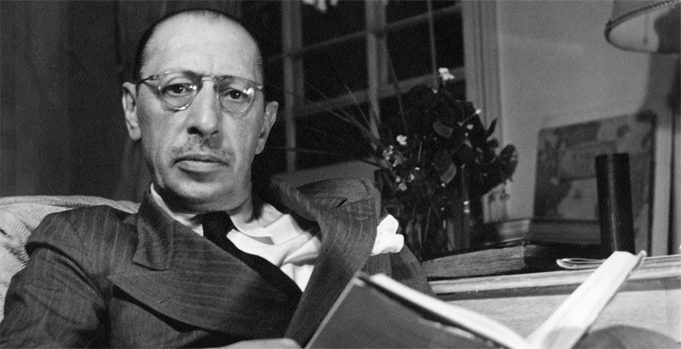Igor Stravinsky (1882–1971), a seminal 20th-century composer, revolutionized music with his innovative approach to rhythm, harmony, and orchestration. His diverse body of work spans multiple styles and periods, reflecting his evolution from Russian nationalist traditions to neo-classical and serialist techniques. Here are ten of Stravinsky’s most significant compositions:
Igor Stravinsky was one of the most revolutionary composers of the 20th century, whose innovative compositions reshaped the landscape of classical music. Born on June 17, 1882, in Oranienbaum, Russia, he grew up in a musical household. His father, Fyodor Stravinsky, was a bass singer at the Mariinsky Theatre in Saint Petersburg, exposing young Igor to the world of music from an early age.
Stravinsky initially studied law at the University of Saint Petersburg, but his passion for music led him to pursue studies with renowned composer Nikolai Rimsky-Korsakov. Under Rimsky-Korsakov's guidance, Stravinsky honed his compositional skills and developed a deep appreciation for Russian folk music and the principles of orchestration.
Igor Stravinsky, a revolutionary figure in the world of classical music, captivated audiences with his innovative compositions, pushing the boundaries of musical expression. Known for his dynamic style and unconventional approach, Stravinsky's works continue to inspire and influence composers to this day. In this blog post, we delve into the enigmatic brilliance of Igor Stravinsky, exploring his ten best songs that showcase his unique artistic vision.
Igor Stravinsky, the legendary Russian composer, conductor, and pianist, was one of the most influential figures in 20th-century classical music. His innovative compositions, often marked by complex rhythms and daring harmonies, revolutionized the way we perceive music. In this blog, we delve into the genius of Stravinsky and explore seven of his best songs that have left an indelible mark on the world of music.
1. A Russian Roots: Born on June 17, 1882, in Oranienbaum, Russia (now Lomonosov), Stravinsky's early exposure to the rich cultural heritage of his homeland played a significant role in shaping his musical style. He drew inspiration from Russian folk music and the works of influential composers like Rimsky-Korsakov, making his compositions uniquely vibrant and infused with Russian sensibilities.
Ígor Fyodorovitch Stravinsky, one of the most influential composers of the 20th century, was born on June 17, 1882, in Oranienbaum, near St. Petersburg, Russia. He came from a musical family, with his father Fyodor Stravinsky being a prominent bass singer at the Imperial Opera in St. Petersburg.
Stravinsky's early education in music began with piano and composition lessons from renowned teachers, including Nikolai Rimsky-Korsakov. He initially showed great promise as a pianist and composer, but it was his compositional genius that would ultimately shape his career and leave an indelible mark on the world of music.
Igor Fyodorovich Stravinsky ComSE (17 June [O.S. 5 June] 1882 – 6 April 1971) was a Russian-born composer, pianist, and conductor. He is widely considered one of the most important and influential composers of the 20th century.
Stravinsky's compositional career was notable for its stylistic diversity. He first achieved international fame with three ballets commissioned by the impresario Serge Diaghilev and first performed in Paris by Diaghilev's Ballets Russes: The Firebird (1910), Petrushka (1911), and The Rite of Spring (1913). The latter transformed the way in which subsequent composers thought about rhythmic structure and was largely responsible for Stravinsky's enduring reputation as a musical revolutionary who pushed the boundaries of musical design. His "Russian phase" which continued with works such as Renard, the Soldier's Tale and Les Noces, was followed in the 1920s by a period in which he turned to neoclassicism. The works from this period tended to make use of traditional musical forms (concerto grosso, fugue and symphony), drawing on earlier styles, especially from the 18th century. In the 1950s, Stravinsky adopted serial procedures. His compositions of this period shared traits with examples of his earlier output: rhythmic energy, the construction of extended melodic ideas out of a few two- or three-note cells and clarity of form, and of instrumentation.
Ígor Stravinsky
Tracklist:
A Sagração da Primavera
Primeira Parte: A Adoração da Terra
1. Introdução
2. Augúrios de Primavera / Dança das Adolescentes
3. Jogo do Rapto
4. Rondas da Primavera
5. Jogos das Tribos Rivais
6. Procissão do Sábio
7. O Sábio
8. Dança da Terra
Segunda Parte: O Sacrifício
9. Introdução
10. Círculos Místicos das Adolescentes
11. Glorificação da Eleita
12. Evocação dos Ancestrais
13. Ação Ritual dos Ancestrais
14. Dança do Sacrifício. A Eleita
O Pássaro de Fogo (Suíte, 1945)
15. Introdução
16. Prelúdio e Dança
17. Variações
18. Pantomima I
19. Pas-De-Deux
20. Pantomima II
21. Scherzo
22. Pantomima III. Rondó
23. Dança Infernal
24. Canção de Ninar
25. Hino Final
For more:
http://www.melhoresmusicasclassicas.blogspot.com
#MusicHistory
#ClassicalMusic
#Stravinsky

